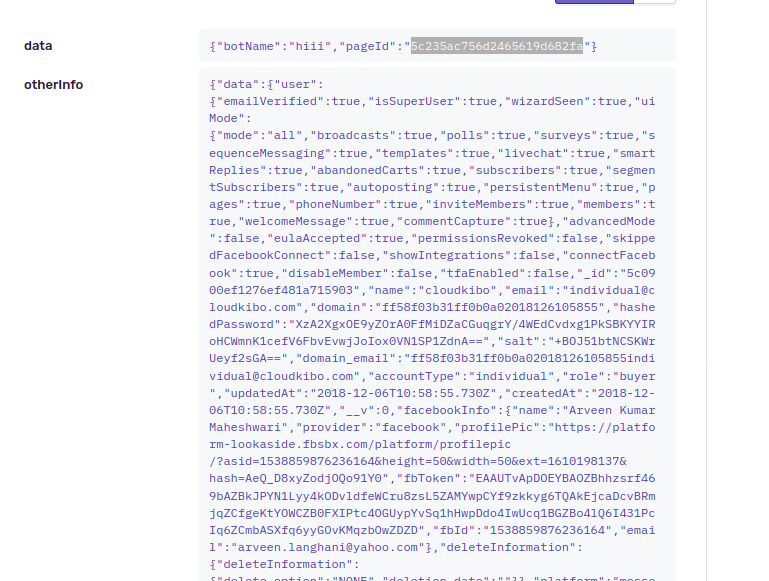Best CRM for creatives isn’t just about managing contacts; it’s about orchestrating the entire lifecycle of your creative projects. From initial client outreach to final invoice, the right CRM system can significantly improve efficiency, allowing you to focus on what you do best: creating. This guide explores the key features, top systems, and integration strategies to help you choose the perfect CRM solution for your unique creative business.
Creative professionals, from graphic designers to musicians, face unique challenges in managing clients and projects. Juggling deadlines, invoices, and communication can be overwhelming. A well-chosen CRM can alleviate these pressures, providing a centralized hub for managing clients, projects, and finances, ultimately leading to increased productivity and profitability.
Defining “Creative” Professionals

The term “creative professional” encompasses a broad range of individuals who utilize their artistic talents and innovative thinking to produce original works and deliver services. These professionals are not limited to traditional art forms but extend to various fields where imagination and skill are paramount. Understanding the diverse needs of these professionals is crucial for developing effective CRM solutions tailored to their specific workflows.Creative professionals often operate in a project-based environment, managing multiple clients and deadlines simultaneously.
This necessitates a system that streamlines communication, project tracking, and financial management. Effective CRM implementation can significantly improve efficiency and profitability for these individuals.
Types of Creative Professionals Using CRM
Creative professionals leveraging CRM systems span a wide spectrum. This includes, but is not limited to, graphic designers, photographers, web developers, musicians, writers, filmmakers, architects, and fashion designers. Each niche presents unique challenges and requires specific CRM features to optimize their workflow.
Unique Needs of Creative Niches
Graphic designers, for instance, often manage numerous client projects concurrently, each with unique branding guidelines and file specifications. A CRM helps them track revisions, deadlines, and client feedback efficiently. Photographers require a system to manage shoots, client communication, and post-production workflows, including image delivery and invoicing. Musicians may utilize CRM for managing tour dates, fan communication, merchandise sales, and collaboration with other artists.
The common thread is the need for efficient client management and project organization, regardless of the specific creative discipline.
Challenges Faced by Creatives in Client and Project Management
Many creative professionals struggle with juggling multiple projects, tracking client communication across various platforms (email, social media, phone), and maintaining accurate financial records. This often leads to missed deadlines, miscommunication, and difficulties in invoicing. Other common challenges include inefficient time management, difficulty in prioritizing tasks, and the lack of a centralized system for managing client information and project details.
These challenges can significantly impact productivity and profitability. A well-implemented CRM system can mitigate these issues by providing a centralized hub for all client and project-related information.
CRM Features for Creatives
Choosing the right CRM can significantly streamline a creative professional’s workflow, improving client management and boosting overall productivity. A well-integrated CRM system acts as a central hub for all client-related information, from initial contact to final project delivery and beyond. This allows creatives to focus more on their core skills and less on administrative tasks.
Essential CRM Features for Project Management
Effective project management is crucial for creative professionals. A robust CRM should offer tools to manage the entire project lifecycle, ensuring timely delivery and client satisfaction. Key features include task assignment, deadline setting, progress tracking, and resource allocation.
Efficient task management involves assigning tasks to team members, setting due dates, and monitoring progress. Deadlines are essential for maintaining project schedules and preventing delays. Progress tracking allows for real-time monitoring of individual tasks and the overall project, enabling proactive issue resolution. Resource allocation features ensure that the right people are assigned to the right tasks at the right time, optimizing team productivity.
These features, working in concert, significantly reduce the likelihood of missed deadlines and project overruns.
Invoicing, Payment Processing, and Expense Tracking
Financial management is a critical aspect of running a creative business. A CRM that integrates invoicing, payment processing, and expense tracking streamlines these processes, saving time and improving accuracy.
Automated invoicing features allow for quick and easy generation of invoices, reducing administrative overhead. Integrated payment gateways simplify the payment process for clients, leading to faster payment cycles. Expense tracking capabilities help creatives monitor their spending, providing valuable insights into profitability and facilitating accurate financial reporting. The combination of these features provides a comprehensive financial management solution, crucial for maintaining a healthy business.
Communication Features in CRM Systems
Effective communication is paramount in building and maintaining strong client relationships. A creative CRM should offer a range of communication tools to facilitate seamless interaction with clients and collaborators.
Email marketing features allow for targeted communication with clients, keeping them informed about project updates and promoting new services. Scheduling tools, such as appointment scheduling and calendar integration, streamline meeting arrangements and ensure timely communication. Centralized communication through the CRM ensures all team members have access to the same information, preventing miscommunication and improving overall project efficiency. These features are essential for building strong relationships and maintaining clear communication throughout the project lifecycle.
Comparison of CRM Features
The following table compares five key features across different CRM systems. Note that specific features and pricing may vary depending on the chosen plan and provider.
| Feature Name | Description | Pros | Cons |
|---|---|---|---|
| Project Management | Task management, deadlines, progress tracking | Improved organization, better collaboration, reduced risk of missed deadlines | Can be complex to set up and learn, requires consistent data entry |
| Invoicing & Payments | Automated invoicing, payment processing integration | Faster payment cycles, reduced administrative burden, improved cash flow | Integration with existing accounting software may be required, transaction fees may apply |
| Client Communication | Email marketing, scheduling tools, integrated communication channels | Improved client engagement, stronger client relationships, enhanced communication efficiency | Requires consistent effort to maintain communication, can be overwhelming with many clients |
| Reporting & Analytics | Project performance tracking, financial reporting, client behavior analysis | Data-driven insights for business improvement, informed decision-making, identification of trends | Requires data analysis skills, can be time-consuming to interpret complex reports |
| Customization & Integrations | Ability to tailor the CRM to specific business needs, integration with other software | Improved workflow efficiency, increased flexibility, enhanced functionality | May require technical expertise, integration can be complex and time-consuming |
Top CRM Systems for Creatives: Best Crm For Creatives

Choosing the right CRM can significantly streamline operations and boost efficiency for creative businesses. The ideal system will manage client relationships, projects, and finances effectively, while also integrating seamlessly with the creative workflow. Several CRMs cater specifically to the needs of creative professionals, offering features beyond basic contact management.
CRM System Comparisons for Creative Professionals, Best crm for creatives
The following systems are frequently adopted by creative professionals, each offering a unique set of advantages and disadvantages. Consider your specific needs and budget when making a selection.
- HubSpot CRM: HubSpot offers a free version alongside paid plans, making it accessible to businesses of all sizes. Its strength lies in its user-friendly interface and robust contact management features. For creative agencies, HubSpot allows for easy tracking of client projects, communication history, and task assignments. The free version offers basic functionality, while paid tiers unlock more advanced features like marketing automation and sales tools.
Scalability is excellent, adapting to growth with increased user licenses and features.
- Pros: User-friendly interface, free plan available, robust contact management, good scalability.
- Cons: Some advanced features require paid plans, can be overwhelming for very small businesses.
- Monday.com: Monday.com is a highly visual and customizable project management platform that also incorporates CRM functionalities. Its visual workflow dashboards are particularly appealing to creative teams, allowing for easy tracking of project progress and collaboration. Pricing is tiered based on the number of users and features, offering flexibility for scaling.
- Pros: Highly visual and customizable, excellent for project management, strong collaboration tools.
- Cons: Can be expensive for larger teams, requires a learning curve for full utilization.
- Zoho CRM: Zoho CRM is a comprehensive and affordable option, offering a wide array of features for managing contacts, deals, and projects. Its affordability and extensive feature set make it attractive to smaller creative businesses. Zoho offers various pricing tiers, allowing for scaling as the business grows. Integration with other Zoho applications further enhances its functionality.
- Pros: Affordable, extensive feature set, good integration with other Zoho apps.
- Cons: Interface can feel cluttered, may require significant time investment to master all features.
- Pipedrive: Pipedrive is a sales-focused CRM, particularly beneficial for creative businesses that focus on client acquisition and project sales. Its intuitive interface and sales pipeline visualization tools make it easy to track leads and manage the sales process. Pricing is based on the number of users and features, offering scalable options for growing businesses.
- Pros: Intuitive interface, strong focus on sales pipeline management, good for tracking leads.
- Cons: Lacks some of the project management features found in other CRMs, may not be ideal for businesses focused on complex projects.
- Salesforce Sales Cloud: Salesforce is a highly customizable and scalable CRM solution, suitable for larger creative agencies with complex needs. It offers advanced features like automation, reporting, and analytics. However, its complexity and cost make it less suitable for smaller businesses. Pricing is based on a subscription model with various tiers and add-ons.
- Pros: Highly customizable and scalable, advanced features, robust reporting and analytics.
- Cons: Expensive, complex interface, steep learning curve.
Integration and Automation

Integrating a CRM with other business tools and automating key processes are crucial for maximizing efficiency and streamlining workflows for creative professionals. This section explores the benefits of such integration and automation, providing examples and demonstrating how to visualize these integrations.A well-integrated CRM acts as a central hub, connecting disparate parts of your business and providing a single source of truth for client information, project details, and financial data.
This eliminates data silos, reduces manual data entry, and minimizes the risk of errors. The automation capabilities further enhance efficiency by handling repetitive tasks, freeing up valuable time for creative endeavors.
Benefits of CRM Integration with Other Business Tools
Integrating your CRM with other software significantly enhances your operational efficiency. For example, connecting your CRM with project management software like Asana or Trello allows for seamless tracking of project progress directly within your CRM client profiles. This provides a complete view of each client’s projects, deadlines, and associated tasks. Similarly, linking your CRM with accounting software like Xero or QuickBooks streamlines invoicing and payment processing, providing real-time financial insights related to specific clients or projects.
This integrated approach minimizes manual data transfer and ensures data accuracy across all platforms.
Types of Automation for Improved Efficiency
Several automation features can dramatically improve efficiency for creative professionals. Automated email sequences, for example, can nurture leads, send project updates, or follow up on invoices, all without manual intervention. These sequences can be triggered by specific events, such as a new client signup or project completion. Task reminders ensure timely completion of crucial tasks, preventing missed deadlines and improving project management.
Automated reporting provides valuable insights into client interactions, project performance, and overall business health, allowing for data-driven decision-making.
Workflow Diagram: CRM Integration
Consider a workflow involving a freelance graphic designer using a CRM (e.g., HubSpot), project management tool (e.g., Asana), and invoicing software (e.g., FreshBooks). A simplified workflow diagram could be represented as follows:A client inquiry arrives via email. This is automatically logged in the CRM, creating a new contact record and initiating an automated email sequence. The designer then creates a project in Asana, linking it to the client’s CRM profile.
As the project progresses, updates in Asana automatically reflect in the CRM. Upon project completion, the CRM triggers an automated invoice creation in FreshBooks. Finally, the CRM tracks invoice payments and updates the client’s record accordingly. This entire process is largely automated, minimizing manual data entry and maximizing efficiency. The visual representation would show a flow chart illustrating the data movement and automation triggers between these three software applications, highlighting the central role of the CRM in orchestrating the workflow.
Choosing the Right CRM
Selecting the perfect CRM can feel overwhelming for creative professionals. The market offers a wide array of options, each boasting unique features and capabilities. However, a systematic approach can significantly simplify this decision-making process, leading to a solution that seamlessly integrates with your workflow and enhances your productivity. This section will guide you through the essential considerations and steps involved in choosing the right CRM for your creative business.
Decision-Making Flowchart for CRM Selection
A clear flowchart can streamline the CRM selection process. The following steps, visualized as a flowchart, will help creatives systematically evaluate their options.Imagine a flowchart starting with a “Start” node. The first decision point is: “Do you have a clear understanding of your business needs and workflows?” A “Yes” branch leads to the next step: “Assess your budget and scalability requirements.” A “No” branch loops back to a “Define Business Needs” box, which directs the user to identify key workflows, client management processes, and project tracking methods.
After assessing budget and scalability, the flowchart proceeds to “Evaluate CRM Features.” This node branches into different features like contact management, project management, reporting, and integrations. Each feature branch leads to a sub-node for evaluating specific CRM options based on that feature. Finally, all branches converge at a “Select CRM” node, followed by an “End” node. This flowchart emphasizes the iterative nature of the selection process, allowing for adjustments based on the evaluation of different CRM systems.
Factors to Consider When Choosing a CRM
Several key factors significantly influence the choice of a suitable CRM. Careful consideration of these aspects ensures a long-term, effective solution.
- Budget: CRMs range from free, limited options to enterprise-level solutions with substantial monthly or annual fees. Determining your budget upfront is crucial for narrowing down your choices. For example, a freelance graphic designer might opt for a free or low-cost CRM with basic features, while a large design agency would require a more robust and scalable solution, even if it means a higher investment.
- Scalability: Consider your business’s potential growth. A CRM that suits your current needs might not scale effectively as your business expands. Choosing a system that can adapt to increasing clients, projects, and team members is essential for long-term success. For instance, a small photography studio using a simple CRM might need to upgrade to a system with advanced features and user management capabilities as they hire more photographers and assistants.
- Ease of Use: A complex, difficult-to-navigate CRM can hinder productivity. Opt for a user-friendly interface with intuitive navigation. The system should integrate seamlessly into your existing workflow without requiring extensive training or technical expertise. For instance, a simple drag-and-drop interface for project management might be more suitable for a team with limited technical skills compared to a system requiring complex coding or scripting.
- Feature Set: Different CRMs offer varying features. Prioritize the functionalities crucial for your business. These might include contact management, project management, invoicing, reporting, and integrations with other software. A musician using a CRM might prioritize contact management for booking gigs and managing fan interactions, while a web developer might focus on project management and time tracking features.
Tailoring CRM Systems to Specific Creative Workflows
Different creative professionals require tailored CRM solutions. Adapting a CRM to a specific workflow enhances efficiency and productivity.
- Freelance Photographer: A freelance photographer might utilize a CRM primarily for contact management, storing client details, project information, and scheduling shoots. Simple CRMs like HubSpot CRM or Zoho CRM’s free version would be sufficient for managing client interactions and projects.
- Marketing Agency: A marketing agency, on the other hand, might need a more comprehensive system with features for project management, client communication, campaign tracking, and reporting. Systems like Pipedrive or Monday.com offer robust features for managing multiple projects and clients simultaneously.
- Film Production Company: A film production company requires a CRM capable of handling complex project management, resource allocation, and collaboration among various team members. More advanced CRMs like Salesforce or Monday.com, configured for project management and team collaboration, would be suitable for such complex workflows.
Illustrative Examples of CRM Use Cases
Effective Customer Relationship Management (CRM) systems are invaluable tools for creative professionals, streamlining workflows and fostering stronger client relationships. The following examples illustrate how different creatives can leverage CRM features to improve efficiency and grow their businesses.
Photographer Managing Client Projects
Imagine Sarah, a freelance photographer specializing in wedding photography. From the initial inquiry via her website contact form, Sarah uses her CRM to track every interaction with potential and existing clients. Each lead is added as a contact, with details like their wedding date, location, desired style, and budget meticulously recorded. As the project progresses, Sarah updates the contact record with details of consultations, contract signing, photo shoot scheduling, and post-production milestones.
The CRM’s built-in task management allows her to set reminders for important deadlines, ensuring timely communication and deliverables. Once the final photos are delivered, Sarah uses the CRM to send follow-up emails, requesting feedback and potentially prompting future bookings. This centralized system provides a complete history of each client interaction, allowing Sarah to provide personalized service and maintain a high level of professionalism.
Graphic Designer Leveraging CRM for Client Communication, Project Tracking, and Invoicing
Consider Mark, a graphic designer running his own small studio. Mark utilizes his CRM to manage communication with clients, tracking project progress, and generating invoices. When a client requests a design, Mark creates a project record in his CRM, detailing the scope of work, deadlines, and budget. He uses the system to send and receive files, track revisions, and maintain a detailed history of communication with the client.
The CRM’s integrated project management features allow him to set milestones, assign tasks, and monitor progress. Crucially, the CRM also integrates with his accounting software, enabling seamless invoicing and payment tracking. This integrated approach minimizes administrative overhead, allowing Mark to focus more on the creative aspects of his work. He can easily generate reports on project profitability and client performance, providing valuable insights for business decision-making.
Musician Managing Touring Schedule and Fan Interactions
A musician’s CRM dashboard could visually represent their touring schedule as a calendar, color-coded by venue size or type of event. Each event would link to a detailed record containing venue contact information, stage times, rider requests, and local support act details. Simultaneously, the dashboard would display a real-time feed of social media mentions, email inquiries, and fan interactions from various platforms.
A section dedicated to fan management could segment fans based on their engagement level (e.g., newsletter subscribers, concert attendees, merchandise buyers), allowing for targeted marketing campaigns and personalized communications. For example, the dashboard might highlight fans who have interacted frequently, allowing the musician to send personalized messages or offer exclusive content. This comprehensive view provides the musician with a centralized hub for managing all aspects of their career, from logistics to fan engagement, ensuring a smooth and efficient workflow.
Last Point

Selecting the best CRM for your creative business is a crucial step toward streamlined operations and sustainable growth. By carefully considering your specific needs, budget, and workflow, you can leverage the power of a CRM to enhance client relationships, optimize project management, and ultimately, propel your creative endeavors to new heights. Remember, the right CRM isn’t just a tool; it’s a strategic investment in the future of your creative success.
User Queries
What is the difference between a CRM and project management software?
While both manage projects, CRMs focus on client relationships and overall business management, while project management software prioritizes task organization and workflow within specific projects. Many CRMs integrate with project management tools.
How much does a CRM for creatives typically cost?
Pricing varies greatly depending on the features, scalability, and provider. Expect options ranging from free plans with limited features to enterprise solutions with substantial monthly or annual fees. Free trials are often available.
Can I integrate my CRM with my existing accounting software?
Yes, many CRMs offer integrations with popular accounting software, allowing for automated invoicing, expense tracking, and financial reporting. Check the CRM’s integration capabilities before purchasing.
Is it difficult to learn how to use a CRM?
Most CRMs are designed with user-friendliness in mind. Many offer tutorials and support documentation. The learning curve depends on the complexity of the system and your prior experience with similar software.

